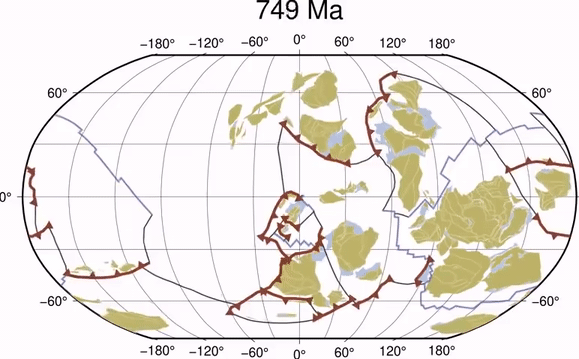How tectonic plates on Earth change in 1 billion years
- Tram Ho
“For the first time, a complete tectonic model has been built, including all boundaries,” geologist Michael Tetley, who completed his PhD at the University of Sydney, explained to Euronews.

The movement and sliding of the rocks is quite easy to see if you watch the video – adjacent land masses can collide with each other or drift apart, and you might be surprised at how countries and continents recently settled the position we know today.
Plate motions are estimated through the study of the geologic-magnetic record, which provides data on the historical positions of the surface with respect to the Earth’s axis of rotation and the types of matter trapped in the rock samples. fit pieces of past geological plates together.
As tectonic plates move, it affects climate, tides, volcanic activity, animal life and their evolution, metal formation, minerals etc everything that lives on the surface. face.
Understanding these motions and patterns is crucial if scientists want to predict how habitable our planet will be in the future and where we’ll find the sources of the metals we need. we need to secure a clean energy future.
Geologist Sabin Zahirovic from the University of Sydney said: “Planet Earth is extremely dynamic, with a surface consisting of plates that continuously jostle each other in a unique way among the known rocky planets. ..These plaques move at the rate a fingernail grows, but when a billion years condenses in 40 seconds, an enchanting dance emerges. Oceans open and close, continents disperse and recombine periodically to form vast supercontinents.”
Geologist Dietmar Muller from the University of Sydney said: “Our team has created an entirely new model of Earth’s evolution over the past billion years.
“Our planet is unique in the way it hosts life. But this is only possible because geological processes, such as plate tectonics, provide a planet’s life-supporting system. pure.”
The study was published in Earth-Science Reviews.
Source : Genk
